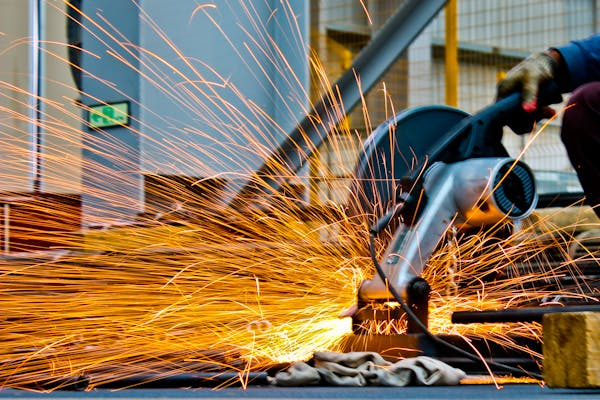Production capacity is the metric that enables manufacturers to make key decisions on pricing, operations, human resource management and cost structure to obtain peak profitability in a manufacturing based business.Since the manufacturing world is exposed to constant evolution and challenges, keeping the whole production process optimally balanced in line with the facility’s production capacity is required to stay ahead.
Utilizing a number of strategies and effective tools, we can optimize this metric to avoid bottlenecks and unbalanced sales demand in the market. With knowledge about your production capacity, you are in a better position to plan, forecast, and provide customers the exact value.
All this, however, requires a better understanding of production capacity and how to achieve it. S, let’s start with what production capacity is in detail.
What is Production Capacity?
The maximum amount of output that a manufacturing process or machine can produce over a period of time is called its Production Capacity. By understanding this metric, manufacturers can set realistic production goals, optimize resource utilization, and ensure that customer demands are efficiently met.
It depends on factors such as;
Labor and its availability
Machinery specifications and size
Materials being processed and their qualities
Time available for production
Why is Production Capacity Important?
There are several reasons that make the assessment of production capacity extremely important. These are;
Meeting Demand:
The exact knowledge of your production capacity allows you to plan and schedule production according to the customer demand. It’s a great way to meet your target without overcommitting resources or overselling the factory.
Resource Allocation:
Once you assess your capacity, you’re able to manage your resources wisely. It helps in efficiently allocating resources, including labor and machinery, to maximize output.
Identifying Bottlenecks:
Understanding capacity can help identify inefficiencies and bottlenecks in the production process. SOlving issues like these allow for targeted improvements.
Cost Management:
Businesses can confidently avoid unnecessary costs associated with underutilization or overextension of resources by optimizing production capacity.
Factors Affecting Production Capacity
Several factors influence production capacity. Understanding these factors can help you optimize your production capacity smoothly.
The availability and skill level of workers directly impact how much can be produced within a certain timeframe and with certain machines or factory setup..
The type, number, size and condition of machines determine how quickly and efficiently products can be manufactured.
The availability and quality of raw materials play a significant role in maintaining steady production levels. Inferior raw materials can causes intermittent pauses in produc
The time period allocated to production, including working hours and shift schedules, affects the overall output.
Measuring Production Capacity: Common Methods
Here are some common methods that manufacturers can use for accurate measurement, which in turn results in optimized production capacity.
Machine-Hour Capacity:
This involves calculating the total available machine hours in a given period. For instance, A factory has 20 machines that can each operate for 8 hours a day. The daily machine-hour capacity thus would be 160 hours. You can now plan the production process accordingly.
Labor Capacity:
Similar to machine-hour capacity, labor capacity considers the number of available working hours from employees. If 50 workers are available for 8 hours a day, the daily labor capacity is 400 hours. This is how labor can be employed based on their availability or available working hours to either speed up or slow down production, optimizing production capacity.
Output Per Unit Time:
This method measures how much output can be produced per unit of time, more accurately, units per hour. For example, if a machine can produce 10 units per hour, and it operates for 8 hours a day, the daily output capacity is 80 units.
These measurements give you a clear idea, and you can confidently hop on your next step that’s about optimizing production capacity using various strategies.
Strategies for Optimizing Production Capacity
Once production capacity is measured, businesses can employ several strategies to optimize it:
Streamline Processes:
It starts with reviewing and refining production processes to eliminate inefficiencies. This could involve reconfiguring workflows, reducing setup times, or implementing automation to speed up production.
Lean manufacturing techniques like Just-In-Time (JIT) inventory management is a great area to look at to minimize waste and ensure production runs smoothly.
Enhance Workforce Productivity:
Investing in employee training and development can improve skill levels. This results in faster and more efficient production.
Increasing labor capacity during peak production hours is a great strategy to optimize the capacity of a production facility. This can be done by implementing flexible work schedules or additional shifts.
Invest in Technology:
The use of modern manufacturing technologies, such as robotics and advanced software for production planning can significantly boost output and reduce downtime.
Another great way to prevent unexpected machinery breakdowns (major problem) is adopting predictive maintenance technologies like IoT, predictive Analytics, Artificial Intelligence, etc. They ensure large data sets are collected and analyzed to ensure correct actions are taken by engineers to maintain the equipment so it’s always operating at peak efficiency.
Optimize Equipment Utilization:
Never ignore maintenance and timely upgrades of machinery. It can prevent breakdowns and extend the lifespan of equipment, ensuring consistent production capacity.
Scheduling preventive maintenance during off-peak hours can minimize disruptions and maintain steady output levels.
Improve Supply Chain Management:
Ensuring a reliable and timely supply of raw materials is crucial for maintaining production capacity. Establishing strong relationships with suppliers is a crucial part of an efficient supply chain. Working on it will optimize the production capacity, Besides, also considering diversifying sources to reduce the risk of delays.
Implementing supply chain management software can help track inventory levels, manage orders, and forecast demand more accurately.
Common Challenges in Production Capacity & Overcoming Them
Even with careful planning, manufacturers may encounter challenges that affect production capacity. Here’s how to address some of the most common issues:
Bottlenecks
Analyze production flow, identify bottlenecks, and pinpoint area where delays occur
Solutions include;
reallocating resources, adjusting workflows, or investing in additional equipment.
Equipment Downtime
Implement a robust maintenance schedule and use predictive maintenance schedules and technologies to minimize equipment downtime.
These help you detect potential issues to be rectified before they lead to breakdowns.
Labor Shortages:
Address labor shortages by cross-training employees to perform multiple roles. This results in increased flexibility while reducing the impact of absences or turnover.
Consider temporary staffing solutions during peak production periods to meet increased demand without overextending permanent staff.
Material Shortages:
Maintain safety stock levels, diversify suppliers, and use supply chain management software to mitigate the risk of material shortage.
Using supply chain management software is a practical approach toward tracking and managing inventory in real-time.
Continuous Improvement in Production Capacity
Remember optimizing production capacity is not a one-time effort. It requires continuous monitoring and improvement to keep things consistent. Find how to ensure ongoing improvement from the list of suggestions below.
Regular Performance Reviews:
Conduct regular reviews of production performance. It helps you assess if targets are met and identify areas where improvements can be made.
Use metrics such as Overall Equipment Effectiveness (OEE) and Total Effective Equipment Performance (TEEP) to evaluate efficiency.
Employee Feedback:
Encourage feedback from employees on the production floor, as they can often identify inefficiencies or areas for improvement that management may overlook.
Stay Informed on Industry Trends:
Keep up with the latest developments in manufacturing technology and industry best practices.
Adopting new tools or methods provides a competitive edge and further enhances production capacity.
Continuous Training:
Investment in ongoing training for employees produces great results. It keeps them updated on the latest tools, technologies, and techniques in manufacturing.
Collaborative Problem-Solving:
Foster a culture of collaboration and problem-solving within the organization. The involvement of multiple perspectives in developing solutions when challenges emerge can lead to more effective and innovative strategies.
Conclusion
Production capacity is a vital aspect of manufacturing that directly impacts a business’s ability to meet demand, manage resources, and maintain profitability. There are various factors which affect production capacity and understanding these make a big difference. Galley, smart approaches and latest technologies enable us to measure production capacity and employ strategies to optimize it.
Production capacity is a metric that no manufacturer should ignore if long-term success and consistent efficiency is the goal.
Keep an eye for more news & updates on BuzzsLash.Com!




